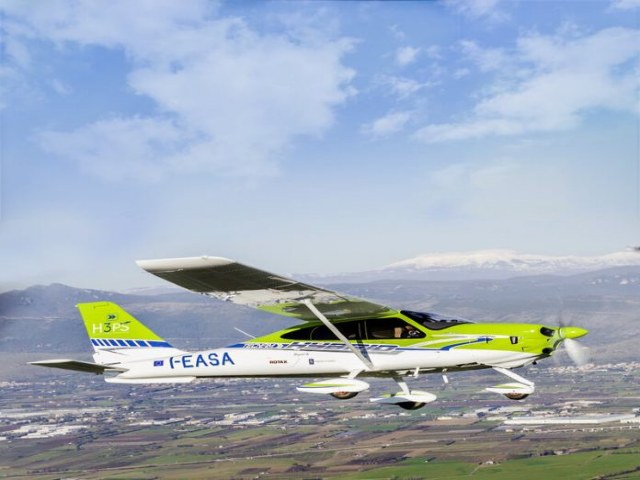A collaboration between Rolls-Royce, Tecnam Aircraft and Rotax successfully produces the new hybrid-electric aircraft P2010 H3PS.
 First Italian manufactured hybrid-electric aircraft takes its first flight. Image: Rolls-Royce
First Italian manufactured hybrid-electric aircraft takes its first flight. Image: Rolls-Royce
A mark was made in history as Chief Experimental Pilot, Lorenzo De Stefano, flew the first hybrid-electric aircraft. Tecnam P2010 H3PS is powered by a 104kW Rotax 915 IS engine coupled with a 30kW Rolls-Royce electric motor, totalling 134kW (180hp) powertrain in a fully integrated parallel hybrid configuration. As such, this four-seat aircraft is a first-of-its-kind.
According to Tecnam Aircraft’s R&D Director Fabio Russo, the H3PS flight test demonstration marks a major milestone in the aviation industry’s journey towards de-carbonization and R&D on alternative powertrains.
“Though H3PS is not intended for market purposes, our successful flight tests demonstrate that hybrid powertrain, with combustion engine coupled with an electric motor, can bear the same useful load of the traditional 180hp combustion engine,” said Russo.
H3PS electric aircraft project
H3PS, which stands for “High Power High Scalability Aircraft Hybrid Powertrain,” is a project funded under the European Union Horizon 2020 research and innovation program. Launched in 2018, the project has reached its objectives.
With H3PS’ success, Tecnam Aircraft and project partners have validated the aircraft’s scalability potential, lower emissions, state of the art power management technology, building a viable launchpad for future green aircraft models.
Rolls-Royce, Tecnam and Rotax
Rob Watson, President of Rolls-Royce Electrical added that Rolls-Royce is committed to investing in technology solutions to enable and deliver sustainable aviation. He also sees the P2010 H3PS as a pioneering achievement to advance hybrid-electric flights.
“Working with Tecnam and Rotax has been hugely beneficial, and this project has continued to build our capabilities in delivering all-electric and hybrid-electric power and propulsion systems for the advanced air mobility market,” said Watson.
BRP-Rotax has been committed to future-proof mobility and technological progress for more than 100 years. The Upper Austrian company, headquartered in Gunskirchen, currently employs more than 1,500 people and produces engines for the global market.
Michael Dopona, Head of design Organisation BRP-Rotax commented on the successful collaboration for launching the H3PS project. He notes there are still some challenges the aircraft faces, however, with this strong partnership he is confident that all challenges will be resolved with a deeper understanding and a safer landing.
“The project showed that the joint venture with the qualified knowledge of these three global player companies in aviation lead to very interesting and future-orientated results for innovative propulsion systems,” said Dopona.
Future of H3PS
When it comes to future developments, Tecnam’s Managing Director Giovanni Pascale Langer stated that the company will continue to focus on driving the green transition in aviation.
“Our development focuses on three key pillars: environmentally friendly, technologically viable and marketable solutions. We do this by leveraging our multi-generational expertise, research and development, next-generation technology, and strategic partnerships. I look forward to seeing H3PS inspire more innovation and drive our industry forward with cleaner, more efficient technologies,” said Langer.
